Introduction
Yi Jin Jing is an exercise from ancient China. The features of this classical traditional Chinese health practice include extended, soft and even movements that flex the spine invigorate the limbs and internal organs. As an exercise it should be performed in a way that integrates the mind, body and spirit, during the practice practitioners must remain relaxed. If you would like to learn Yi Jin Jing there are a number of special qigong retreats where this is possible.
This article details guidance from the Chinese Health Qigong Association on how to best perform the exercise.
The origins
According to some historians the Yi Jin Jing has its origins in primitive shamanistic rituals. Prototypes of these basic movements where found in a 2000 year old text called Illustration of Qi Conduction. Others however, credit Bodhidharma the Indian Buddhist monk and originator of Shaolin Kung Fu with the creation of the Yi Jin Jing. Whether this is true or not it is undisputed that the monks of the Shaolin Temple played a significant role in the evolution of the Yi Jin Jing exercises.
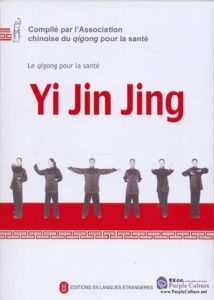
Learn Yi Jin Jing
“The earliest account of the modern 12 movement exercises is included in the Illustrations of Internal Exercise compiled by Pan Wei in 1858 in the Qing Dynasty. As traditional Yi Jin Jing relies heavily on traditional Chinese medicine theory of the Five Elements – metal, wood, water, fire and earth – different schools of the exercise have sprung up emphasising this aspect in many works.” – Chinese Qigong Association.
Characteristics
Smooth and extended movements to stretch the bones and tendons
A full range of motion is required related to the bones and joints. Bones are flexed and muscle groups along with tendons and ligaments are stretched. The result leads to improved blood circulation and nutrition supersession in the soft tissues. Thus enhancing mobility and strength in all directions.
Soft and even movements for coordinated grace
The modern version of the Yi Jin Jing links the 12 movements making the exercise both easier to understand as well as graceful. Limbs are flexed in curved natural range with the joints axis. When strength is required it is applied gradually combined with a tenderness of movement.
Focus on spine turning and flexing
The Yi Jin Jing movements focus on the spines, vertebrae, ligaments and the spinal cord through twisting and stretching movements. The movements must be done with a relaxed body and mind in order to gain the most health benefits. These benefits include improved fitness, prevention of disease, longevity and improved intellect.
Practice Tips
Integration of mind and body with a relaxed spirit
Yi Jin Jing is a qigong set and like most other qigong sets it should be practiced with a relaxed spirit and peaceful mind. The mind should thus follow the movements and should be coordinated with the circulation of qi with the body’s movements. Meanwhile concentration is required to accompany individual movements.
For Example:
- The mind should concentrate on the palms during the Wei Tuo Presenting the Pestle 3 routine
- The mind should be focused on the Mingmen point at the back of the waist while fixing the eyes on the upper palm during the routine 4 of Plucking a Star and Exchanging a Star Cluster.
- The mind should be focused on the palms during the Black Dragon Displaying Its Claws routine.
Other movements require imagination, not consciousness to accompany them. Among them are:
- Three Plates Falling on the Floor
- Displaying Paw Style Palms like a White Crane Spreading Its Wings
- Pulling Nine Cows by Their Tails
- Bowing Down in Salutation
Natural Breathing
- Breathing throughout the exercise should be relaxed and easy. This is particularly important when:
- lifting the hands during the Wei Tuo Presenting the Pestle 3 routine
- when expanding the arms and chest during the Pulling Nine Cows by Their Tails routine,
- and when expanding the arms and chest and relaxing the shoulders during the Nine Ghosts Drawing Swords routine.
This is because the chest cavity expands and contracts during these movements, and should be allowed to do so freely and to the full.
Free and unrestrained inhalation is particularly required when:
- lifting the hands during the Wei Tuo Presenting the Pestle 3 routine,
- and when expanding the arms and chest during the Nine Ghosts Drawing the Swords routine,
- while natural exhalation is required when relaxing the shoulders in this routine,
- when withdrawing the arms in Pulling Nine Cows by Their Tails routine,
- and when pushing out the palms in Displaying Paw-style Palms like a White Crane Spreading Its Wings routine
The reason for this is because the chest cavity expands and contracts during these movements, and should be allowed to do so freely and to the full.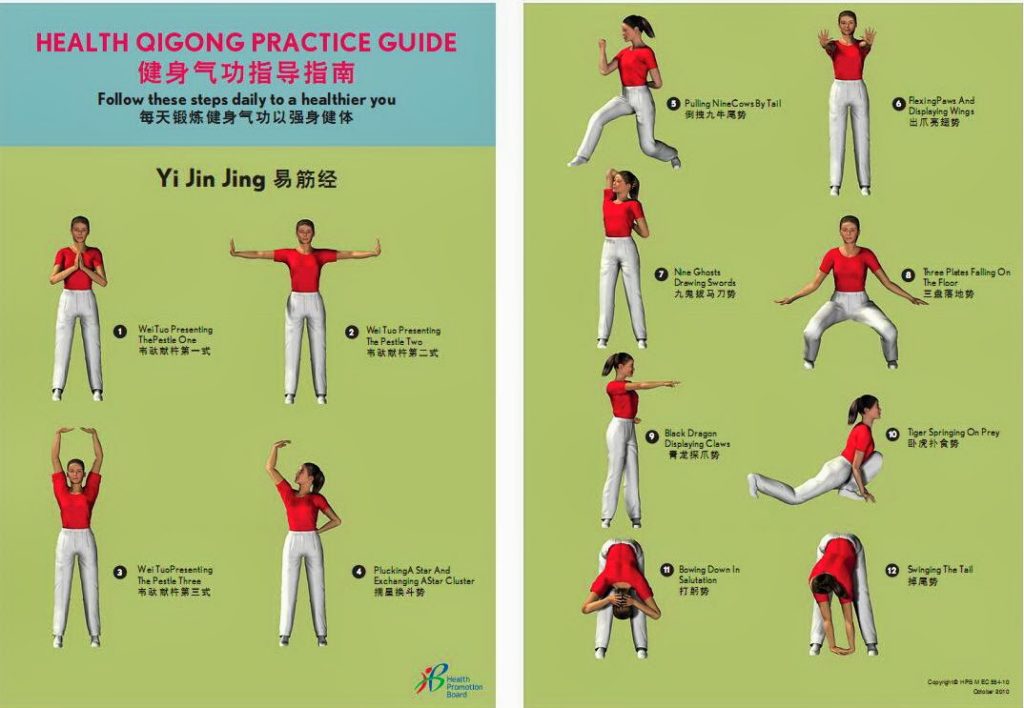 Softness in toughness with the interplay of the substantial and insubstantial
Softness in toughness with the interplay of the substantial and insubstantial
“The softness and toughness of the exercise movements interchange throughout the practice. When stretched or relaxed, they display a dialectical relationship of a unity of opposites, in the same way as the reactions of Yin and Yang, the two opposing and interactive aspects of the body according to traditional Chinese medicine. Various movements require the practitioners to relax for a while after strength is applied, and suitable force is required after softness or relaxation. In this way, the movements will not be stiff and restrained or slack and fatigued.” – Chinese Health Qigong Association
Movements should be appropriately firm and gentile instead of going to extremes. Whether with too much force or with too much slackness.
Flexibility in performance and articulation of “HAI”
The range of movements and extension of postures in Yi Jin Jing are adaptable for all ages working from easier to more difficult.
When squatting and pressing the hands down during the Three Plates Falling on the Floor routine, the sound “HAI” is made. By doing this the practitioner helps move the breath and vital energy to the Dantian. It also has the advantage of avoiding restraint of the lower limbs caused by the squatting motion and upward flow of air back to the head. It also helps to strengthen the Dantian and the kidneys. The sound should be produced from the throat and concentrated at the Yinjiao point of the upper gum.
Full video teaching the Yi Jin Jing from the Chinese Health Qigong Association.
This article has been based on the information provided from the Chinese Health Qigong Association. If you would like to learn Yi Jin Jing there are a number of special qigong retreats where this is possible.

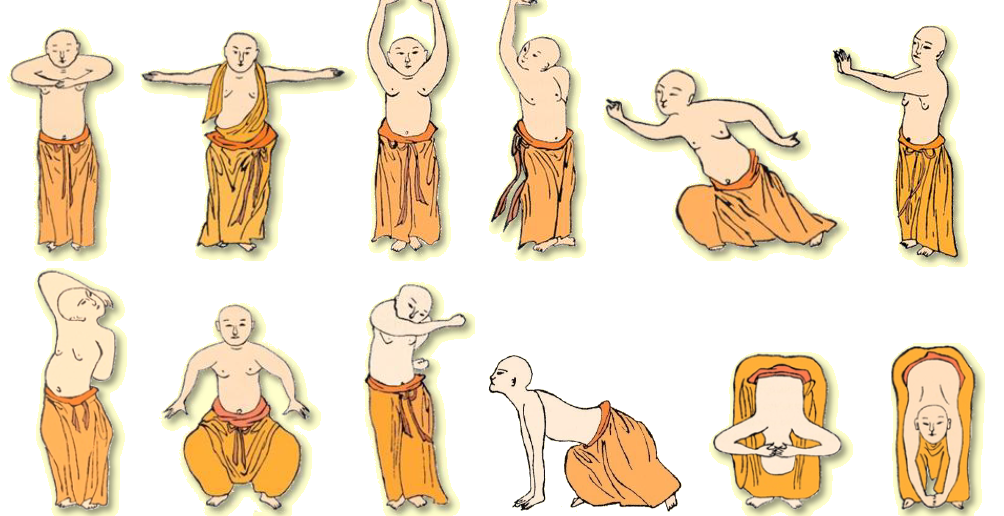
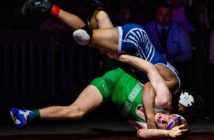

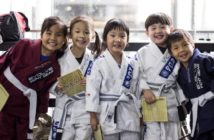
8 Comments
Thank you. Very helpful.
Hi Lynsey, glad you enjoyed the article.
Thanks Dave, for posting this article and videos. Very useful for learning yi jin jing. Not as widely publicized as qi gong, unfortunately.
Great article!
I linked this article to help explain Yi Jin Jing in a post I wrote for my website about Bodhidharma.
I always do my best to link articles and support other blogs and websites vs linking to Wikipedia.
Thanks for the great content and I’ll be sure to visit your website now that I’ve found it.
You’ll find the link in here:
https://sushifitness.com/most-influential-martial-artists-of-all-time-bodhidharma-and-kung-fu/
Great article!
Is there any center in China where they give a 1 month on site course?
Thank you very much!
Hi Gabriel, we work with a number of great schools that would offer training for a month not only in this but in a number of different martial arts as well as qigong sets. You can contact me at info@studymartialarts.org for further information.
Thanks very interesting blog!
doctoral thesis writing phd thesis search